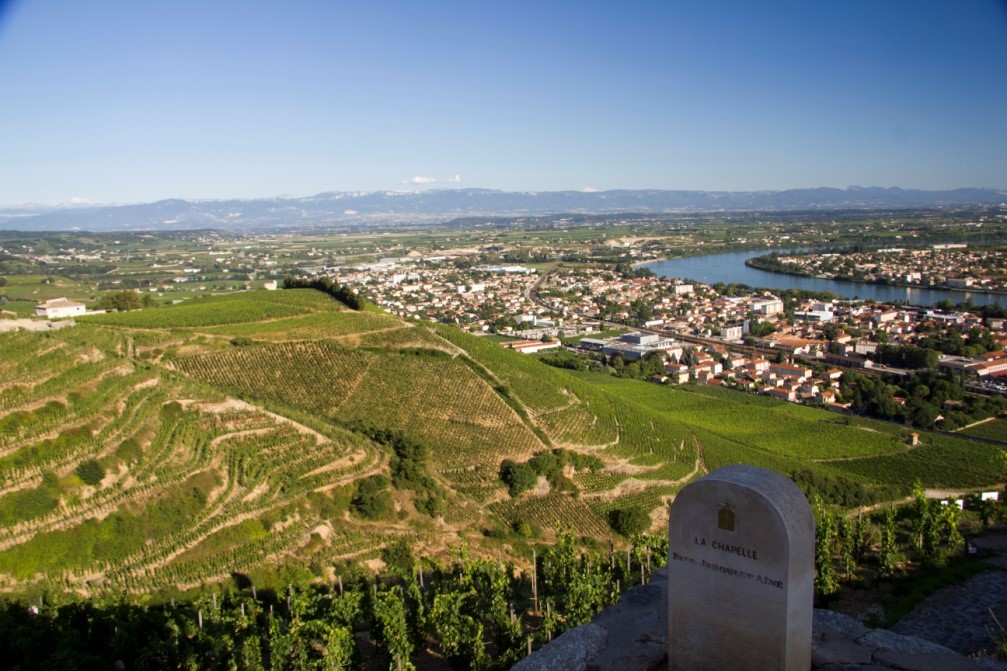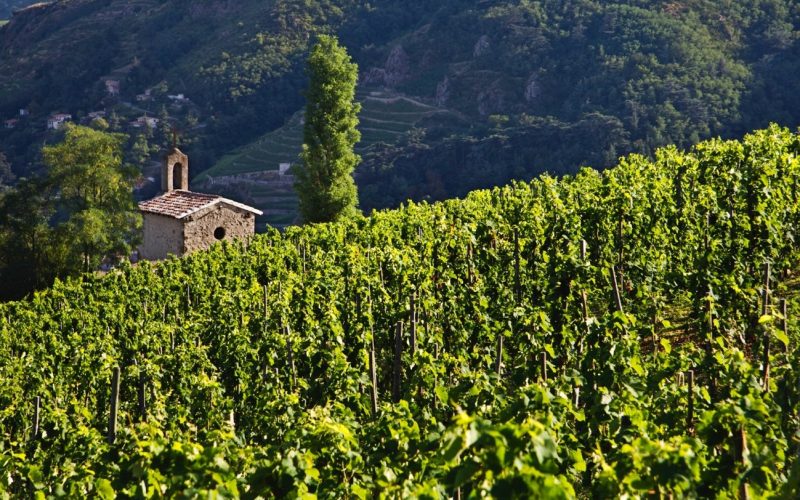Hermitage is a place of worship. One of those vineyards, a must stop for every wine lover, where you have to uncork and enjoy a good bottle, of course from this mythical area. From La Chapelle, where the most charismatic wines are found, the view over the Rhône is majestic. The vineyards undulate over the hills covered with syrah, marsanne and roussanne vines, forming a green canvas, broken only by the waters of the river. A place where, if one could, one would stop time, although enjoying an afternoon in such a setting is a gift for eternity.
As in many other areas, the Rhône’s winemaking tradition began with Roman viticulture. However, according to legend, the Hermitage hill was named after the hermitage built by Gaspard de Stérimberg, who had received the hill from the Queen of France, Blanche of Castile, after his return from the Crusades. There, the Chevalier de Stérimberg replanted a vineyard and withdrew from the world. Over the years, the wines of the hill reached a remarkable importance, gaining more and more international prestige. Today they are the most emblematic wines of the Northern Rhône.
Hermitage has just 136 hectares of vineyards where Syrah reigns supreme, although there are also vines of white varieties, Marsanne and Roussanne. The proportion is around 75% versus 25%, approximately. It should be noted that the AOC allows red wines with a maximum of 15% white grapes.
The slopes of the Hermitage hill are steep, protecting the vineyards from the strong north winds. The soils are varied, with sand, mica, granite and alluvium predominating, but pebbles and cobbles are also abundant. The hill is divided into three parts: in the west, where the syrah symbolises excellence, is the climat of Les Bessards and the famous vineyard of L’Hermite, here the terrain is very rugged, of degraded granite. In the centre, in the lower part, we find the climat of Les Gréffieux, whose soils are rich in clay and fertile, and in the upper part, we find the climat of Le Méal, where the soils are dominated by pebbles and small siliceous stones enriched with loess. In the east, the climats of Les Murets and Les Diognniers stand out, where white varieties are predominant and the slope, with stony soils, is less pronounced.
There are many producers working the Hermitage hill, from the legendary Chave, Chapoutier, Jaboulet and Delas, to others less known, among which I particularly like to mention Dard et Ribo, with its subtle and floral wines.
Don’t hesitate. Spend an afternoon on the Hermitage hill. There is no better place to enjoy life and the great wines of the place, while the Rhône, on a green mantle, meanders at your feet.

